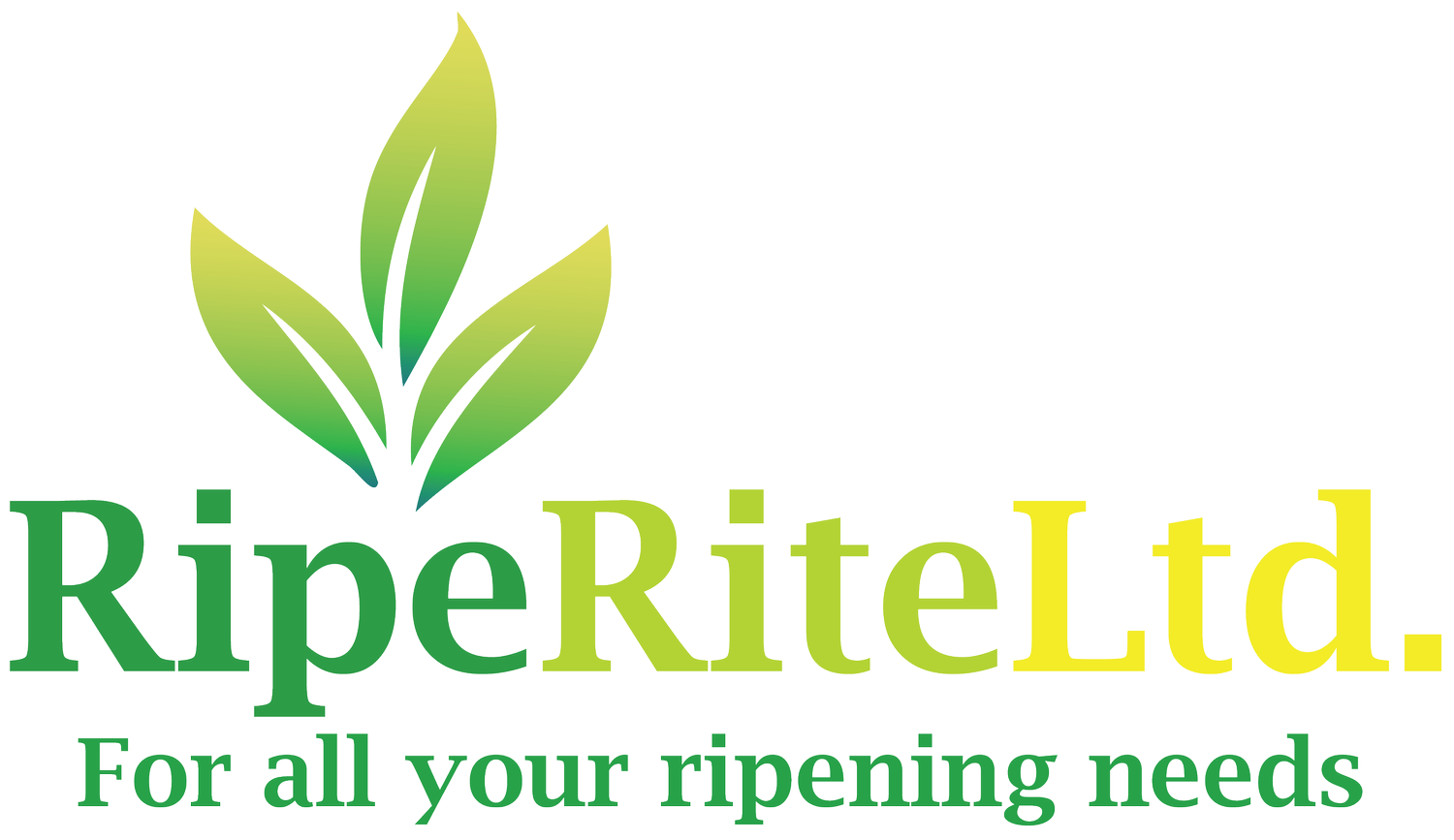Kiwi Preconditioning and Ripening
Table 1. Rate of kiwifruit softening after cold ethylene preconditioning treatment on cold kiwifruit
Table 2. Rate of kiwifruit softening after warm ethylene treatment
This protocol will deal specifically with preconditioning at shipping point. Kiwifruit ripening is triggered by an ethylene treatment but ripening changes are slowed down by decreasing the fruit temperature. As the fruit warms up at the warehouse/retailer stores, ripening will continue.
Harvest
Kiwifruit should be picked according to soluble solids content (SSC). In accordance with the California Kiwifruit Marketing Order, kiwifruit must be picked to correspond with the actual minimum maturity index of at least a 6.5% soluble solids content (SSC) when inspected at the shipping point. To assure fruit quality and consumer acceptance, we recommend picking kiwifruit when it reaches a minimum of 7.0% SSC measured in the field or approximately 14% SSC after forced ripening. Research clearly states that higher sugars at harvest increases the consumer acceptance, storage and shelf-life of kiwifruit. Make sure to check the refractometer and standardize it against distilled water (0%) and/or 20% sucrose solution.
To precondition well mature kiwifruit, 100 ppm ethylene exposure per 12 hours is recommended. A short ethylene exposure of 6 hours is enough to precondition well mature kiwifruit which have been in storage for one week. This preconditioning treatment is only necessary on kiwifruit that have been in cold storage for less than 4-5 weeks.
Preconditioning for Long Distance Shipping (2-3 weeks)
Place cold kiwifruit in any type of container with polyliners at 32°F in a 40-48 ft. truck or ripening room with a temperature setting control. The types of kiwifruit containers such as tray packs, volume fill packages, or tri-wall containers with box polyliners does not interfere with the preconditioning treatment. We recommend the use of polyliners to protect the kiwifruit from water loss and premature shriveling. The ripening treatment should take place far away from any packing facilities to avoid ethylene contamination of long-term storage of kiwifruit.
Ethylene applied at 100 ppm for 12 hours within 32° – 68°F temperature range will induce uniform kiwifruit softening and starch conversion into sugars (ripening). A 6 hour ethylene treatment is enough to precondition kiwifruit which have been in storage at least one week. After venting, cold ethylene-treated kiwifruit can be stored back in your cold storage but in a separate room away from your long term storage of kiwifruit. Kiwifruit treated at near 32°F – 34°F and maintained at near 32°F may last up to 3 weeks for weak kiwifruit and up to 6 weeks for strong kiwifruit. After being transferred to higher temperatures, kiwifruit will soften according to flesh temperature (see Table 1 nearby).
Preconditioning for Short Distance Shipping (4-7 days)
Place warm or cold palletized kiwifruit in a 40-48 ft. truck or room at 68°F / 20°C and high relative humidity. The types of kiwifruit containers such as tray packs, volume fill packages, or tri-wall containers with box polyliners does not interfere with the preconditioning treatment. We recommend use of polyliners to protect the kiwifruit from water loss and premature shriveling. The ripening treatment should take place far away from any packing facilities to avoid ethylene contamination of long-term storage of kiwifruit.
The temperature during shipping should be set near 32-36°F. We recommend precooling kiwifruit before preconditioning to reduce potential decay, shriveling and undesirable fast fruit softening during postharvest handling.
The post treatment temperature management should be adjusted according to the anticipated consumption schedule using Table 2.
If shipping is delayed after treatment, kiwifruit will reach 3 lbs. within approximately six days when held at 32°F / 0°C To assure reaching maximum storage potential, the kiwifruit temperature during storage and shipping should be close to 32°F / 0°C.
Using a Catalytic Generator
Ethylene can be applied by using ethylene generators in position 1, in a “well sealed” 48 foot-trailer (2,825 cubic feet or 80 m3) or position 2, in a trailer not well sealed. We recommend measuring ethylene levels initially in the season for each operation.
These recommendations were taken from an article entitled “Preconditioning Guidelines for Kiwifruit Shippers” by Dr. Carlos H. Crisosto, Director, Fruit and Nut Research and Information Center, University of California, Davis.
While we have made great effort to provide accurate and current ripening techniques, Catalytic Generators makes no warranties regarding these recommendations or the applicability of such information to a particular ripening operation. Please note that we do not provide these recommendations as a replacement for technical ripening experts; if having ripening problems or starting a ripening program, we suggest that professionals be consulted.



